 Because Muslimgauze's Bryn Jones released nearly every second that he recorded in his lifetime, a task which is being continued for him by labels such as Soleilmoon now that he has died, there are many CDs (and double CDs, and triple CDs, and boxsets) which sound very similar to one another and may even have been recorded all in one day, one right after the other. How is this Muslimgauze CD different from all 150+ other Muslimgauze CDs? It isn't, but it is a live recording, which is quite rare in his catalog and is of note simply due to that fact.
Because Muslimgauze's Bryn Jones released nearly every second that he recorded in his lifetime, a task which is being continued for him by labels such as Soleilmoon now that he has died, there are many CDs (and double CDs, and triple CDs, and boxsets) which sound very similar to one another and may even have been recorded all in one day, one right after the other. How is this Muslimgauze CD different from all 150+ other Muslimgauze CDs? It isn't, but it is a live recording, which is quite rare in his catalog and is of note simply due to that fact.
 The Mountaineers have an intriguing style that seems to blend a downhome, foot tapping folk sing along with modern electro-pop techniques,no doubt a product of the past and present influences of their Welshupbringing. At the heart of their songs lies the jangly acoustic soundsof a guitar that might just be a little ragged, the kind that mightmake an appearance around a campfire after everyone's gotten a littleloose. From there, electronic beeps and slurs are used like garnish,never overpowering the heart of the songs, but working along with it,adding new layers of sound and melody to the already tunefulcompositions. "Self Catering" is a bright track that shows offmultitrack harmonies and taut, precise beats that are found throughoutthe EP. "Clap in Time" begins with a windy horn introduction beforegiving way to a cricket chirp of electronic beeps and the song's body,where the singers ask you to do as the title suggests. It's strange,but the electronic chirps, once again give that feeling of a campfiresing-a-long (and clap-a-long), albeit one that is being experiencedthrough a filter of software and ingenuity. "Chicken" is a raucous,stomping song with the words gushing from the singer's mouth andfollowing down the cascading progression before shooting back up to thetop in a strained yelp. "Radio Cat" is the most adventurous track, asgoes for total programmed abstraction, floating around onelectronically processed vocals and a fuzzy programmed beat. The trackis then manipulated and cut up with sudden, jerky clips. Still, itretains a certain swing that the Mountaineers drop into every track.It's not o sterile that you can't swivel your hips, or maybe walk witha little strut as it plays on your mental soundtrack. "Camped Out"features a gorgeous chorus with an excellent harmony that comes throughlike a slightly out of range radio broadcast from the past. "Your Gunnis Sett on Me" is a light guitar piece of obliquely longing lyrics like"If you're gonna step on me / you gotta give it / you heal thisinjury." Hidden behind this is the unlisted "Fuck You in the Eye," andwhile obviously a throwaway fun track, I wouldn't be surprised to seethe music recycled into something more legitimate in the future. Theway in which the Mountaineers use their conventional instruments,classical piano, guitar, in a manner that is perfectly agreeable totheir use of electronic instruments and production techniques, makesthe EP an alluring listen.
The Mountaineers have an intriguing style that seems to blend a downhome, foot tapping folk sing along with modern electro-pop techniques,no doubt a product of the past and present influences of their Welshupbringing. At the heart of their songs lies the jangly acoustic soundsof a guitar that might just be a little ragged, the kind that mightmake an appearance around a campfire after everyone's gotten a littleloose. From there, electronic beeps and slurs are used like garnish,never overpowering the heart of the songs, but working along with it,adding new layers of sound and melody to the already tunefulcompositions. "Self Catering" is a bright track that shows offmultitrack harmonies and taut, precise beats that are found throughoutthe EP. "Clap in Time" begins with a windy horn introduction beforegiving way to a cricket chirp of electronic beeps and the song's body,where the singers ask you to do as the title suggests. It's strange,but the electronic chirps, once again give that feeling of a campfiresing-a-long (and clap-a-long), albeit one that is being experiencedthrough a filter of software and ingenuity. "Chicken" is a raucous,stomping song with the words gushing from the singer's mouth andfollowing down the cascading progression before shooting back up to thetop in a strained yelp. "Radio Cat" is the most adventurous track, asgoes for total programmed abstraction, floating around onelectronically processed vocals and a fuzzy programmed beat. The trackis then manipulated and cut up with sudden, jerky clips. Still, itretains a certain swing that the Mountaineers drop into every track.It's not o sterile that you can't swivel your hips, or maybe walk witha little strut as it plays on your mental soundtrack. "Camped Out"features a gorgeous chorus with an excellent harmony that comes throughlike a slightly out of range radio broadcast from the past. "Your Gunnis Sett on Me" is a light guitar piece of obliquely longing lyrics like"If you're gonna step on me / you gotta give it / you heal thisinjury." Hidden behind this is the unlisted "Fuck You in the Eye," andwhile obviously a throwaway fun track, I wouldn't be surprised to seethe music recycled into something more legitimate in the future. Theway in which the Mountaineers use their conventional instruments,classical piano, guitar, in a manner that is perfectly agreeable totheir use of electronic instruments and production techniques, makesthe EP an alluring listen. When I was seven years old, I received a rather exciting Christmaspresent, or at least it was exciting to me at that young age. It was aYamaha PSR-6 keyboard, with 99 special effect voices (including theever popular 'Machine Gun' and 'Ocean Wave') and 16 different styles ofbeat! Imagine the possibilities that were available to me, the things Icould do with so many features and options. It was an orchestra in abulky black casing, just awaiting the twitch of my conductor's baton.In reality, my seven-year-old virtuosity was capable only of hitting'Samba' and then goofing around with the funny noises. I am reminded ofthis warm childhood memory because Cut Out's "Interlude with FunMachine" sounds to me like it was put together by a group of seven yearolds with PSR-6's. Had I only known then that I could have recordedmyself (with that little thirty-second memory button?) and put out analbum. It honestly sounds, to my ears, as if every loop, beat, andvoice was drawn from this device and then sprinkled with a littlestudio work. The album's opener, "At It Again" goes on for five minuteswith only five seconds worth of music. "The Power Brokers" is theclosest to breaking from the unfortunate Yamaha sound, with drippyeffects, original beats and a bright organ loop that does not overstayits welcome. The track is relatively and thankfully brief. "Theme FromFun Machine, Part I," however, is an exercise in endurance, clocking inas the longest song on the album, though not by much. It's ten minutesand nineteen seconds of the 'March' beat with a rising and falling tonethat sounds like an advanced slide whistle synthesizer. I just keptthinking to myself, 'What could justify ten minutes of this?' In ashorter context, the ideas that Cut Out had for this piece may haveworked, however throughout the long (long) course of "Fun Machine,"they are repeated until your mind becomes desensitized to the audiowavelengths and you forget you're listening to anything at all. Thefinal song, "Fin" does come across well, with a mournful organ thatdrones on darkly, actually managing to evoke a mood or a feeling ratherthan just looping a tinny beat. Its ending is abrupt, but keeping itshort and knowing when to get out is a virtue that would have improvedthe rest of this disc immensely. "Interlude with Fun Machine" suffersfrom a dearth of ideas, and lacks sufficient style to hide that fact.Did they take the name Cut Out as an allusion to the cut out bin? Ihave a suggestion. If you're of a certain age range, chances are thatyou too received a PSR-6, popular among budding grade school musicians,at some point in your childhood. If it happens to be kicking aroundyour basement somewhere, I suggest you dig it out, dust it off, and hitthe 'demonstration' button. That song was always a lot of fun. It waslong, but at least it had variations.
When I was seven years old, I received a rather exciting Christmaspresent, or at least it was exciting to me at that young age. It was aYamaha PSR-6 keyboard, with 99 special effect voices (including theever popular 'Machine Gun' and 'Ocean Wave') and 16 different styles ofbeat! Imagine the possibilities that were available to me, the things Icould do with so many features and options. It was an orchestra in abulky black casing, just awaiting the twitch of my conductor's baton.In reality, my seven-year-old virtuosity was capable only of hitting'Samba' and then goofing around with the funny noises. I am reminded ofthis warm childhood memory because Cut Out's "Interlude with FunMachine" sounds to me like it was put together by a group of seven yearolds with PSR-6's. Had I only known then that I could have recordedmyself (with that little thirty-second memory button?) and put out analbum. It honestly sounds, to my ears, as if every loop, beat, andvoice was drawn from this device and then sprinkled with a littlestudio work. The album's opener, "At It Again" goes on for five minuteswith only five seconds worth of music. "The Power Brokers" is theclosest to breaking from the unfortunate Yamaha sound, with drippyeffects, original beats and a bright organ loop that does not overstayits welcome. The track is relatively and thankfully brief. "Theme FromFun Machine, Part I," however, is an exercise in endurance, clocking inas the longest song on the album, though not by much. It's ten minutesand nineteen seconds of the 'March' beat with a rising and falling tonethat sounds like an advanced slide whistle synthesizer. I just keptthinking to myself, 'What could justify ten minutes of this?' In ashorter context, the ideas that Cut Out had for this piece may haveworked, however throughout the long (long) course of "Fun Machine,"they are repeated until your mind becomes desensitized to the audiowavelengths and you forget you're listening to anything at all. Thefinal song, "Fin" does come across well, with a mournful organ thatdrones on darkly, actually managing to evoke a mood or a feeling ratherthan just looping a tinny beat. Its ending is abrupt, but keeping itshort and knowing when to get out is a virtue that would have improvedthe rest of this disc immensely. "Interlude with Fun Machine" suffersfrom a dearth of ideas, and lacks sufficient style to hide that fact.Did they take the name Cut Out as an allusion to the cut out bin? Ihave a suggestion. If you're of a certain age range, chances are thatyou too received a PSR-6, popular among budding grade school musicians,at some point in your childhood. If it happens to be kicking aroundyour basement somewhere, I suggest you dig it out, dust it off, and hitthe 'demonstration' button. That song was always a lot of fun. It waslong, but at least it had variations.  I grew up a military brat and spent seven of my most formative years inGermany. At the time, I was a total b-boy, listening to classic hip hopthat was on the charts, like Run DMC, Beastie Boys, and Kool Moe Dee. Ihated rock music and wanted nothing to do with it. At the same time, Iwas being introduced to new music through a number of friends andacquaintances. During this time I heard my first taste of Kraftwerk,and the industrial electronics of any West German metropolis. It waskeyboard tones, glitch beats, and the low rumbles of electronic voicesand bass tones. Back then, we didn't really care what there was todance to, as long as we could dance to it. We'd bug out and breakdanceand robot to anything with a beat, which always seemed to amuse theteachers and parents. Secretly, we wanted to know where this music wasmade, as it always felt like it was being made by machines with AI soadvanced they knew just what could make us boogie; and we chastisedAmerican artists who did anything that used similar sounds, from HaroldFaltermeyer to Herbie Hancock, labelling them "posers" like they werestreet punks who didn't know any better. How wrong we were when we werejust reaching adolescence, but how easy it is for a record to bring allthat rushing back. Luke Eargoggle, one of the new gods of robotelectro, displays a clever range of styles all with the same palette onAudio Warriors,and it's a cheeky listen that got me right back to 1983. Each songbounces with energy of a classic sound with updated technology. Fromthe start, you want to move to it, dancing around the room like youjust don't care. "I want to be free to do what I want," says Luke, andit's like an anthem for body-moving. Different rhythms, but all withthat hip-hop style and electronic production, frame each track, asswirls and bumps highlight the computerized vocals that sometimescontain real lyrics and sometimes just exclaim ("Yeah, yeah!"). There'sreally not much more than that to this, but the music begs for thatkind of minimalism. It truly feels like Eargoggle's overjoyed layingthis to tape or hard drive. That energy is catching, and it's been along time since I had this much fun.
I grew up a military brat and spent seven of my most formative years inGermany. At the time, I was a total b-boy, listening to classic hip hopthat was on the charts, like Run DMC, Beastie Boys, and Kool Moe Dee. Ihated rock music and wanted nothing to do with it. At the same time, Iwas being introduced to new music through a number of friends andacquaintances. During this time I heard my first taste of Kraftwerk,and the industrial electronics of any West German metropolis. It waskeyboard tones, glitch beats, and the low rumbles of electronic voicesand bass tones. Back then, we didn't really care what there was todance to, as long as we could dance to it. We'd bug out and breakdanceand robot to anything with a beat, which always seemed to amuse theteachers and parents. Secretly, we wanted to know where this music wasmade, as it always felt like it was being made by machines with AI soadvanced they knew just what could make us boogie; and we chastisedAmerican artists who did anything that used similar sounds, from HaroldFaltermeyer to Herbie Hancock, labelling them "posers" like they werestreet punks who didn't know any better. How wrong we were when we werejust reaching adolescence, but how easy it is for a record to bring allthat rushing back. Luke Eargoggle, one of the new gods of robotelectro, displays a clever range of styles all with the same palette onAudio Warriors,and it's a cheeky listen that got me right back to 1983. Each songbounces with energy of a classic sound with updated technology. Fromthe start, you want to move to it, dancing around the room like youjust don't care. "I want to be free to do what I want," says Luke, andit's like an anthem for body-moving. Different rhythms, but all withthat hip-hop style and electronic production, frame each track, asswirls and bumps highlight the computerized vocals that sometimescontain real lyrics and sometimes just exclaim ("Yeah, yeah!"). There'sreally not much more than that to this, but the music begs for thatkind of minimalism. It truly feels like Eargoggle's overjoyed layingthis to tape or hard drive. That energy is catching, and it's been along time since I had this much fun.  At the very least, the sound of Lazarus's lazy drawl and deliveryindicates someone who just woke up in the morning, if not actuallyrising from the dead. Guitars are plucked deliberately, syllables areenunciated slowly, and the music proceeds ploddingly. Sometimes it is arace between Montgomery's drawl and his guitar to see which can proceedmore slowly. Often they are neck and neck, two tortoises fumblingtowards a far-off finish line. The scratchiness of the vocals screamsfor a glass of water to dispel those early morning frogs in the throat.And on the fringes of the music are little electronic twiddlings which,at first, are more decorative than substantive but which eventuallycome to define the album. Lazarus is Trevor Montgomery, who has playedwith Tarentel and The Drift; this is his first solo album where heexplores some quiet acoustic compositions. The most unsettling (andfascinating) part of Lazarus's music is the ghostly background vocalswhich pop up in many songs. The background voice is a few octaveshigher than Montgomery's main voice, so it is hard to discern if it isthe same person singing them. But the background voice is alsochillingly more scratchy, unsteady, and frail. My impression was thatthere was a background banshee, rather than a human, singing. The firsthalf of the album maintains a monotony which is only broken by "Ocean(Burn the Highways)," a song which picks of the lagging pace and fillsin the space with some fine guitar plucking and a lively organ duringthe chorus. It also has the most unsettling instance of the backgroundbanshee vocals, where her voice threatens either to decomposealtogether or send us shivering to bed, curled up and frightened (thinkof the difference between Winona Ryder's characters in "EdwardScissorhands:" her young character in the film sounds normal, whereasher character as aged narrator has a geriatric, frail voice which stillmakes my hair bristle when I hear it). But the monotony persists in theother seven or so songs at the beginning of the album as they flowseamlessly into one another, not really making a name for themselves.Ironically, by the time the lovely short instrumental "(untitled)"comes about, Lazarus adds some interesting electronics to the limpingacoustics to spruce up the sound. The highlight of this is heard at theend of "Obviust" when vocals are overtaken by the more compellingelectronic frequency noodling. The last four songs are the mostcaptivating of the album, forecasting a darkness and a vision so bleakthat another resurrection might be in order.
At the very least, the sound of Lazarus's lazy drawl and deliveryindicates someone who just woke up in the morning, if not actuallyrising from the dead. Guitars are plucked deliberately, syllables areenunciated slowly, and the music proceeds ploddingly. Sometimes it is arace between Montgomery's drawl and his guitar to see which can proceedmore slowly. Often they are neck and neck, two tortoises fumblingtowards a far-off finish line. The scratchiness of the vocals screamsfor a glass of water to dispel those early morning frogs in the throat.And on the fringes of the music are little electronic twiddlings which,at first, are more decorative than substantive but which eventuallycome to define the album. Lazarus is Trevor Montgomery, who has playedwith Tarentel and The Drift; this is his first solo album where heexplores some quiet acoustic compositions. The most unsettling (andfascinating) part of Lazarus's music is the ghostly background vocalswhich pop up in many songs. The background voice is a few octaveshigher than Montgomery's main voice, so it is hard to discern if it isthe same person singing them. But the background voice is alsochillingly more scratchy, unsteady, and frail. My impression was thatthere was a background banshee, rather than a human, singing. The firsthalf of the album maintains a monotony which is only broken by "Ocean(Burn the Highways)," a song which picks of the lagging pace and fillsin the space with some fine guitar plucking and a lively organ duringthe chorus. It also has the most unsettling instance of the backgroundbanshee vocals, where her voice threatens either to decomposealtogether or send us shivering to bed, curled up and frightened (thinkof the difference between Winona Ryder's characters in "EdwardScissorhands:" her young character in the film sounds normal, whereasher character as aged narrator has a geriatric, frail voice which stillmakes my hair bristle when I hear it). But the monotony persists in theother seven or so songs at the beginning of the album as they flowseamlessly into one another, not really making a name for themselves.Ironically, by the time the lovely short instrumental "(untitled)"comes about, Lazarus adds some interesting electronics to the limpingacoustics to spruce up the sound. The highlight of this is heard at theend of "Obviust" when vocals are overtaken by the more compellingelectronic frequency noodling. The last four songs are the mostcaptivating of the album, forecasting a darkness and a vision so bleakthat another resurrection might be in order.  After a few years in which only a handful of Merzbow albums seemed toemerge, the typically prolific Masami Akita has returned to histraditional, aggressive release schedule. Having overcome theexhaustion associated with the fifty CD Merzbox, the past six months have offered a plethora of new material, including Frog, Merzbeat, Merzzow, the collaboration with Pan Sonic, and the Russell Haswell collaboration Satanstornade.Finally, Ant-Zen has stepped into the ring with this cleverly packaged4x3" CD set. Each disc offers a bite-sized portion of the diverselynoisy flavors of Merzbow's modern noise compositions. The ferocious"Warhorse" opens this collection with a wailing guitar loop that soonsubmits to the cacophony of abstract percussion and sizzlingsoundscapes. Far removed from his earlier work a la Music For Bondage Performance,the piece hits like an air raid and offers little relief through its 21minute duration. In contrast, the second CD opens with the minimal yetbassy rumblings of "Space Trackin," whose somewhat rhythmic structureexperiences constant interruption from static-laden frequencies. Itstays relatively consistent until roughly the last minute, evolvinginto a squeaky filtered bleep-beat experiment. The accompanying"Ramatam" combines a white hot sheet of electronics with hard rockdrums before yielding to the sounds of burning hard drives. Disc threecomes from the same mindset, if not the same recording sessions, of theMerzbeat project. Of the two tracks here, "Stone The Crow"appeals to me more with its steady, sludgy rock backbeat churning underan array of dominant, menacing squeals and hisses. The final CD soundsmost like an Ant-Zen release. From the onset of "CD Hunter," a reworkof the previously-available "AB Hunter," a muffled rhythm lays thefoundation for stream upon stream of digital noise. After giving allfour discs a good listen, it has become clear to me that Merzbow isreleasing some of the most creative and interesting work of his entirecareer.
After a few years in which only a handful of Merzbow albums seemed toemerge, the typically prolific Masami Akita has returned to histraditional, aggressive release schedule. Having overcome theexhaustion associated with the fifty CD Merzbox, the past six months have offered a plethora of new material, including Frog, Merzbeat, Merzzow, the collaboration with Pan Sonic, and the Russell Haswell collaboration Satanstornade.Finally, Ant-Zen has stepped into the ring with this cleverly packaged4x3" CD set. Each disc offers a bite-sized portion of the diverselynoisy flavors of Merzbow's modern noise compositions. The ferocious"Warhorse" opens this collection with a wailing guitar loop that soonsubmits to the cacophony of abstract percussion and sizzlingsoundscapes. Far removed from his earlier work a la Music For Bondage Performance,the piece hits like an air raid and offers little relief through its 21minute duration. In contrast, the second CD opens with the minimal yetbassy rumblings of "Space Trackin," whose somewhat rhythmic structureexperiences constant interruption from static-laden frequencies. Itstays relatively consistent until roughly the last minute, evolvinginto a squeaky filtered bleep-beat experiment. The accompanying"Ramatam" combines a white hot sheet of electronics with hard rockdrums before yielding to the sounds of burning hard drives. Disc threecomes from the same mindset, if not the same recording sessions, of theMerzbeat project. Of the two tracks here, "Stone The Crow"appeals to me more with its steady, sludgy rock backbeat churning underan array of dominant, menacing squeals and hisses. The final CD soundsmost like an Ant-Zen release. From the onset of "CD Hunter," a reworkof the previously-available "AB Hunter," a muffled rhythm lays thefoundation for stream upon stream of digital noise. After giving allfour discs a good listen, it has become clear to me that Merzbow isreleasing some of the most creative and interesting work of his entirecareer.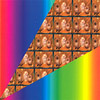 Neon Hunk walks the line between quirky and totally annoying. They playtwisted jerky rock music that was probably inspired partly by Boredomsbut is nowhere near as fun. Certainly their garish artwork seemsgreatly in debt to Yamantaka Eye, but like the music it seems a littlediluted. I bet they like the Residents a bit too. Brutalism withkittens might mess up kitchen table if the totally distortedsynthesisers don't mess up the lettuce first and the clattering drumscould probably crush your tomato at fifty paces. I can't really say Ilike this album or don't like it, it just kind of craps about like aflappy kid who tries too hard and knocks everything over while I trynot to get annoyed that I'm not listening to Boredoms instead, and endup mixing metaphors instead of chopping up Robert Sandell from 'MixingIt' on Radio 3 to feed to my pack of hounds who all sound a bit likeXTC but not really and the rest of the CD is quite different and notvery good in actual fact. Not in this HC fact though, its all of thesame quality with a super-dumb drummer who clatters off a bit behindthroughout but that's his minimal charm. Mothmaster seems to be after afingernails-on-chalkboard sound on the synth but falls just short ofutter shrillness. Sometimes they even fuck about playing the tapesbackwards. Its like they wanted the lunatics to take over the asylumbut only got the toytown version with Larry the Lamb and Noddy jinglingbells all night until their mums shouted at them to shut the fuck up.The quasi-songs threaten to fall apart any minute but are usually overjust before that happens. The album is also really short, which mightbe a blessing in disguise but could be one good reason not to shell outfull price for it, if I haven't already put you off. Like Pink andBrown,they give their tracks humourous titles that aren't really very funny,but who cares what the songs are called anyway? They might be quiteamusing to catch live if they pull off silly moves to match the twistsand turns of the gargled unintelligible babbling screeching vocals.Neon Hunk seems like a one trick pony one leg short, but you might keepit around out of some kind of misguided pity. Someone should flog thislot to the Hoxton trendies fast, while they wait for an exciting newband called Radio 2 to pretend they wrote an old Gang of 2 song, whilstnot mentioning that wave, punk and core are now acceptable to theafternoon teatime set. At least Jonathan Ross will never play Neon Hunkon the radio, and that's the immoral of this sordid abortion. Don'teven think about getting this until you have the ultra heavy killerNoxagt album on Load. Fuck Neon Hunk, they couldn't even be bothered toget a classically trained viola player in the band, and what good isthat?
Neon Hunk walks the line between quirky and totally annoying. They playtwisted jerky rock music that was probably inspired partly by Boredomsbut is nowhere near as fun. Certainly their garish artwork seemsgreatly in debt to Yamantaka Eye, but like the music it seems a littlediluted. I bet they like the Residents a bit too. Brutalism withkittens might mess up kitchen table if the totally distortedsynthesisers don't mess up the lettuce first and the clattering drumscould probably crush your tomato at fifty paces. I can't really say Ilike this album or don't like it, it just kind of craps about like aflappy kid who tries too hard and knocks everything over while I trynot to get annoyed that I'm not listening to Boredoms instead, and endup mixing metaphors instead of chopping up Robert Sandell from 'MixingIt' on Radio 3 to feed to my pack of hounds who all sound a bit likeXTC but not really and the rest of the CD is quite different and notvery good in actual fact. Not in this HC fact though, its all of thesame quality with a super-dumb drummer who clatters off a bit behindthroughout but that's his minimal charm. Mothmaster seems to be after afingernails-on-chalkboard sound on the synth but falls just short ofutter shrillness. Sometimes they even fuck about playing the tapesbackwards. Its like they wanted the lunatics to take over the asylumbut only got the toytown version with Larry the Lamb and Noddy jinglingbells all night until their mums shouted at them to shut the fuck up.The quasi-songs threaten to fall apart any minute but are usually overjust before that happens. The album is also really short, which mightbe a blessing in disguise but could be one good reason not to shell outfull price for it, if I haven't already put you off. Like Pink andBrown,they give their tracks humourous titles that aren't really very funny,but who cares what the songs are called anyway? They might be quiteamusing to catch live if they pull off silly moves to match the twistsand turns of the gargled unintelligible babbling screeching vocals.Neon Hunk seems like a one trick pony one leg short, but you might keepit around out of some kind of misguided pity. Someone should flog thislot to the Hoxton trendies fast, while they wait for an exciting newband called Radio 2 to pretend they wrote an old Gang of 2 song, whilstnot mentioning that wave, punk and core are now acceptable to theafternoon teatime set. At least Jonathan Ross will never play Neon Hunkon the radio, and that's the immoral of this sordid abortion. Don'teven think about getting this until you have the ultra heavy killerNoxagt album on Load. Fuck Neon Hunk, they couldn't even be bothered toget a classically trained viola player in the band, and what good isthat?  The mix of smooth-jazz and four-on-the-floor beats on this new full-length is rather bland on this release from Shitkatapult, who is more commonly known for excellent releases that are usually somewhere between airy and desolate beat-driven songs and flat out boogie down, break out the boom box party pleasers. The grooves on Revolv_er do not always connect, however and I'm left feeling disappointed by its combo of live and electronic sounds.
The mix of smooth-jazz and four-on-the-floor beats on this new full-length is rather bland on this release from Shitkatapult, who is more commonly known for excellent releases that are usually somewhere between airy and desolate beat-driven songs and flat out boogie down, break out the boom box party pleasers. The grooves on Revolv_er do not always connect, however and I'm left feeling disappointed by its combo of live and electronic sounds.
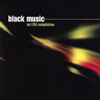 Whether one enjoys these label-sampler compilations depends mostly onhow one's taste agrees with that of the person who runs the label.There are no record labels whose taste I agree with 100%, but I like alot of what LTM does, enough to keep me interested in what label-bossJames Nice decides to issue next. This CD compiles tracks from therecent batch of LTM releases with a few otherwise unreleased songs tosucker in the completists. Hell, it works for me, why not. LTM and itssub-label Boutique seem to have several related missions: to reissuemusic originally released by Factory (other than the bigshots, JoyDivision, Durutti Column, and New Order) to music by bands who might atsome point have had a record (even just a 7") on Factory, and torelease new music by bands who were on Factory long ago and are eitherstill going or who have been ressurected due to Nice's enthusiasm. Oneof those bands, Crispy Ambulance, has donated a live album from thierreunion tour as a bonus CD that comes free with the first run of "BlackMusic" CDs.
Whether one enjoys these label-sampler compilations depends mostly onhow one's taste agrees with that of the person who runs the label.There are no record labels whose taste I agree with 100%, but I like alot of what LTM does, enough to keep me interested in what label-bossJames Nice decides to issue next. This CD compiles tracks from therecent batch of LTM releases with a few otherwise unreleased songs tosucker in the completists. Hell, it works for me, why not. LTM and itssub-label Boutique seem to have several related missions: to reissuemusic originally released by Factory (other than the bigshots, JoyDivision, Durutti Column, and New Order) to music by bands who might atsome point have had a record (even just a 7") on Factory, and torelease new music by bands who were on Factory long ago and are eitherstill going or who have been ressurected due to Nice's enthusiasm. Oneof those bands, Crispy Ambulance, has donated a live album from thierreunion tour as a bonus CD that comes free with the first run of "BlackMusic" CDs.I don't love all of this, of course. My taste runs more towards thelate 70s/early 80s industrial post-punk sounds, so the tracks here byDepartment S (a foot-tapping punk-disco anthem called "Going LeftRight") , the amorphous fuzz noises by Ludus (one of the exclusivetracks), and especially Crawling Chaos and Artery's skewed punkappealled to me. The comp is successful in that it's certainly got myinterest enough to seek out more CDs by these bands, which areforthcoming in the months ahead. The reunited Crispy Ambulance and theproject currently calling itself the Wake (now a duo containing onlyone original member) sound tired and reaching, not particularly asinspired as those bands early 1980s music. The Graham Massey (of BitingTongues and 808 State) remix of a newer Crispy song just plods alongwith seemingly random effects and some movie samples...
- Crawling Chaos - Arabesque
- Ludus Rosa - Luxemburg
- Section 25 - Part Primitiv
 Listening to the overtly Eastern influenced percussion Angus Maclise plays on parts of this double CD, I can't help thinking that replacing him with Mo Tucker might've been the best thing that ever happened to the Velvet Underground. They're such different drummers, almost opposites, that you suspect Lou Reed had totally had enough of the hippy dippy guy who'd turn up to play gigs half an hour late and then carried on playing half an hour after the rest of the band finished. Tucker's monotonous tub thump became such a signature of that band that it's hard to imagine them any other way.
Listening to the overtly Eastern influenced percussion Angus Maclise plays on parts of this double CD, I can't help thinking that replacing him with Mo Tucker might've been the best thing that ever happened to the Velvet Underground. They're such different drummers, almost opposites, that you suspect Lou Reed had totally had enough of the hippy dippy guy who'd turn up to play gigs half an hour late and then carried on playing half an hour after the rest of the band finished. Tucker's monotonous tub thump became such a signature of that band that it's hard to imagine them any other way.
 Further into the Angelika Koehlermann riddle, here is a release thatsurprised me by actually not being that bad. It's not really that good,either. However, I'm surprised that a release like this made it onto alabel that seems proud of its unbroken record of pure, unadulteratedsilly crap. B.O.S. is an Austrian trio whose sound is informed both byKrautrock and by current German lap-pop like The Notwist and Lali Puna.B.O.S.' songs use the classic Can formula: a dark, insistent bassrhythm that repeats ad infinitum, to which is added instrumental andpercussion overdubs, trance-inducing vocals, and galaxy of spaceyeffects. B.O.S. alternately use simple guitar chords, trumpet,clarinet, harp, toy percussion and burbling electronics to round outtheir kosmische music. None of these instruments are played with muchskill or virtuosity, but that's really not the point, is it? They havequite a knack for writing a pop hook, as well, even if you can't reallydecipher what the vocalist is singing. As a first release, O-Land showsa lot of promise. There's nothing terribly inventive about a song like"Bring Back," but it does have a passable atmosphere and a rathercatchy melody that make for an engaging listen. Unlike Ted Minsky andBoulder dDash, this album does not have me sprinting for the ejectbutton. Will the Angelika Koehlermann riddle ever be solved? I thinkAngelika herself sums it up best when she says "[My friend Gerhard]stopping swimming after an accident. He's finally like sinking to thebottom of his lonely life. I also try to get home in a way. I had ahouse some times ago, but one day, I went there, and the house haddisappeared." There is absolutely nothing I can add to that statement.
Further into the Angelika Koehlermann riddle, here is a release thatsurprised me by actually not being that bad. It's not really that good,either. However, I'm surprised that a release like this made it onto alabel that seems proud of its unbroken record of pure, unadulteratedsilly crap. B.O.S. is an Austrian trio whose sound is informed both byKrautrock and by current German lap-pop like The Notwist and Lali Puna.B.O.S.' songs use the classic Can formula: a dark, insistent bassrhythm that repeats ad infinitum, to which is added instrumental andpercussion overdubs, trance-inducing vocals, and galaxy of spaceyeffects. B.O.S. alternately use simple guitar chords, trumpet,clarinet, harp, toy percussion and burbling electronics to round outtheir kosmische music. None of these instruments are played with muchskill or virtuosity, but that's really not the point, is it? They havequite a knack for writing a pop hook, as well, even if you can't reallydecipher what the vocalist is singing. As a first release, O-Land showsa lot of promise. There's nothing terribly inventive about a song like"Bring Back," but it does have a passable atmosphere and a rathercatchy melody that make for an engaging listen. Unlike Ted Minsky andBoulder dDash, this album does not have me sprinting for the ejectbutton. Will the Angelika Koehlermann riddle ever be solved? I thinkAngelika herself sums it up best when she says "[My friend Gerhard]stopping swimming after an accident. He's finally like sinking to thebottom of his lonely life. I also try to get home in a way. I had ahouse some times ago, but one day, I went there, and the house haddisappeared." There is absolutely nothing I can add to that statement.  Ted Minsky is actually Anne Grabow. Why has Anne Grabow chosen such a masculine moniker? Who is Anne Grabow? Who, for that matter, is Angelika Koehlermann? That's like asking who Betty Crocker is. Someone. Anyone. No one. And in the end, does it matter? What evidence can we glean from the press release? Nothing important, it seems, except that Ted Minsky is described alternately as a "young costume designer" and as a "super-architect" leading us "to the borders of pop music." This is pure hyperbole, I'm afraid.
Ted Minsky is actually Anne Grabow. Why has Anne Grabow chosen such a masculine moniker? Who is Anne Grabow? Who, for that matter, is Angelika Koehlermann? That's like asking who Betty Crocker is. Someone. Anyone. No one. And in the end, does it matter? What evidence can we glean from the press release? Nothing important, it seems, except that Ted Minsky is described alternately as a "young costume designer" and as a "super-architect" leading us "to the borders of pop music." This is pure hyperbole, I'm afraid.
 The further I investigate, the more Angelika Koehlermann seems to be a fictional character. According to the press release, she is a girl from Paris who, on a whim, took a train to Koln and met a guy who suggested that they "make an electronic music label." She decided to try her hand at playing "guitar tracks for Japanese young people."
The further I investigate, the more Angelika Koehlermann seems to be a fictional character. According to the press release, she is a girl from Paris who, on a whim, took a train to Koln and met a guy who suggested that they "make an electronic music label." She decided to try her hand at playing "guitar tracks for Japanese young people."
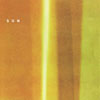 Pop music has become associated recently with certain bands that loveto either impersonate early rock n' roll to no avail or slickeverything up in fancy production to make up for the horriblesongwriting. This delicate debut does neither and ends up inducing aneased state of mind. It also happens to include a second full albumwith each track mixed by the likes of Rafael Toral, Hrvatski, andChristoph Heemann. Every instrument and every little nuance takes itstime to develop and never raises its voice beyond a low murmur. Thelyrics are lighthearted, sometimes nonsensical, and always have atendency to pass in and out of the spotlight. There's a sense ofheartbreak here and there, especially on "Moon" and "I Don't Mind."Slightly treated guitars and pianos phase in and out of eachother andon the latter a small, gentle voice declares "I don't mind if I'm notby your side" as if it were a catharsis and a resignation. Sun has afantastic sense of space and their more laid back songs areparticularly excellent: there's always room to breathe and stretch outwithin the songs themselves and so every small detail stands out andsparkles as if it were the proud star of the show. The closing "It'sNot Real" is a blues-inspired mark that puts a pit right in the centerof my stomach. The impression is one of loneliness and a dying sense ofhope. I've often sat down outside at night with this playing and justzoned out completely; everything just slows down right along with themusic. The remix album is entirely different from the original. Themusic is still mostly low-key and some of the original elements areretained but there are noiser and more cavernous waves of sound used.Perhaps I'll go take a drive and remember all the places I used to hangout while listening to this, there's a sense of childhood throughoutthat makes me want to reminisce about a few things.
Pop music has become associated recently with certain bands that loveto either impersonate early rock n' roll to no avail or slickeverything up in fancy production to make up for the horriblesongwriting. This delicate debut does neither and ends up inducing aneased state of mind. It also happens to include a second full albumwith each track mixed by the likes of Rafael Toral, Hrvatski, andChristoph Heemann. Every instrument and every little nuance takes itstime to develop and never raises its voice beyond a low murmur. Thelyrics are lighthearted, sometimes nonsensical, and always have atendency to pass in and out of the spotlight. There's a sense ofheartbreak here and there, especially on "Moon" and "I Don't Mind."Slightly treated guitars and pianos phase in and out of eachother andon the latter a small, gentle voice declares "I don't mind if I'm notby your side" as if it were a catharsis and a resignation. Sun has afantastic sense of space and their more laid back songs areparticularly excellent: there's always room to breathe and stretch outwithin the songs themselves and so every small detail stands out andsparkles as if it were the proud star of the show. The closing "It'sNot Real" is a blues-inspired mark that puts a pit right in the centerof my stomach. The impression is one of loneliness and a dying sense ofhope. I've often sat down outside at night with this playing and justzoned out completely; everything just slows down right along with themusic. The remix album is entirely different from the original. Themusic is still mostly low-key and some of the original elements areretained but there are noiser and more cavernous waves of sound used.Perhaps I'll go take a drive and remember all the places I used to hangout while listening to this, there's a sense of childhood throughoutthat makes me want to reminisce about a few things.  Tell the hippies come back and be crushed to dust! This is easily BardoPond's best album and maybe the most dazzling recording I've heard in adecade or so! Straight out of the flimsy artwork bereft plasticenvelope on its first wonderful spin even their previous run ofoutstanding vented trip-fuck drone-rockers hadn't quite prepared me forsuch fine honed intensity and sheer beauty. Bardo Pond have alwaysliked their psychedelic stew very heavy and deeply hypnotic. These sixsongs take a trip through beautiful cosmic mindfuck sex energy and outspinning around stars, dissolving into pure light. If you want headexpanding drone rock with mammoth slow guitar overkill, this is theplace to find it. I didn't think they'd ever be able to surpass theirprevious highpoint Set and Setting,but they have and then some. The recording is sharper but that doesn'tdetract from the heady riff brew, just fires it to harder glory. Whereonce they were sludgey they now burn clear and bright with no sops tovapid commerciality. Two guitars overdriven with effects trace patternson the sun. Isobel Sollenberger sings beguilingly of every man being astar which sounds trite on the screen but fits the music perfectly.There is a deceptive lull when one of the guys, probably bassist ClintTakeda, takes a mumbling stroll through "Walking Clouds" in a superiortake on the kind of psych-folk Flying Saucer Attack used to excel at.When the final swirling megablast of "Night of Frogs" atomizes solarrevolution time, it's obvious that Bardo Pond have penetrated so farbeyond the mundane now that there isn't any turning back. Just at thepoint of collapse, about to t(r)ip over into infinity, On the Ellipseis such a fitting title—this would be a great soundtrack to leaving theplanet, dropping out forever.Mogwai have proclaimed them theirfavourite band, but Bardo Pond are universes beyond. The word is thatthey're going to be touring Europe with Jackie-OMotherfucker and Threnody Ensemble in the Autumn. Maybe it'll be timeto hit the road and never come back.
Tell the hippies come back and be crushed to dust! This is easily BardoPond's best album and maybe the most dazzling recording I've heard in adecade or so! Straight out of the flimsy artwork bereft plasticenvelope on its first wonderful spin even their previous run ofoutstanding vented trip-fuck drone-rockers hadn't quite prepared me forsuch fine honed intensity and sheer beauty. Bardo Pond have alwaysliked their psychedelic stew very heavy and deeply hypnotic. These sixsongs take a trip through beautiful cosmic mindfuck sex energy and outspinning around stars, dissolving into pure light. If you want headexpanding drone rock with mammoth slow guitar overkill, this is theplace to find it. I didn't think they'd ever be able to surpass theirprevious highpoint Set and Setting,but they have and then some. The recording is sharper but that doesn'tdetract from the heady riff brew, just fires it to harder glory. Whereonce they were sludgey they now burn clear and bright with no sops tovapid commerciality. Two guitars overdriven with effects trace patternson the sun. Isobel Sollenberger sings beguilingly of every man being astar which sounds trite on the screen but fits the music perfectly.There is a deceptive lull when one of the guys, probably bassist ClintTakeda, takes a mumbling stroll through "Walking Clouds" in a superiortake on the kind of psych-folk Flying Saucer Attack used to excel at.When the final swirling megablast of "Night of Frogs" atomizes solarrevolution time, it's obvious that Bardo Pond have penetrated so farbeyond the mundane now that there isn't any turning back. Just at thepoint of collapse, about to t(r)ip over into infinity, On the Ellipseis such a fitting title—this would be a great soundtrack to leaving theplanet, dropping out forever.Mogwai have proclaimed them theirfavourite band, but Bardo Pond are universes beyond. The word is thatthey're going to be touring Europe with Jackie-OMotherfucker and Threnody Ensemble in the Autumn. Maybe it'll be timeto hit the road and never come back.  Ex Models torment their instruments, creating sounds that can be lookedupon as pushing the equipment to its limits or just plain making ithurt so that it screams in pain and joy. They are the latest masters ofthe no wave sound, emerging from the New York underground only severalyears ago and already boasting a mature sound and a loyal following. Zoo Psychologyis their second full-length, and it shows growth over their debut asthe band grows comfortable in some ways but branches out in others.These musicians want to dismantle the song structure, abating therelentless verse-chorus arrangements to allow for more adventurous andimprovisational terrain. At the same time, there is an overalldismemberment of melody and time signatures. All throughout, thebrothers Motia intertwine the screams of the guitars with the shrieksof Shahin, who seems to enjoy pushing his vocal cords until they don'teven have the will to relent. It's not easy listening, and it's not aneasy listen, either. It's organized disorder, with a fine sense ofhumor and a generous helping of tongue-in-cheek, particularly on thesong titles ("Fuck to the Music," "Brand New Panties," and "HeyBoner"). In fact, its the sexual charge that gets these songs across,despite the almost disjointed nature of the music. It's not foreveryone, but the near funk of "Hott 4 Discourse" and the jackhammer"What is a Price" can appeal to most anyone who likes post punk eardamaging noise. A band that's this unafraid to push their limits can'tdo anything but improve, and it'll be a strange and pleasureable rideevery time.
Ex Models torment their instruments, creating sounds that can be lookedupon as pushing the equipment to its limits or just plain making ithurt so that it screams in pain and joy. They are the latest masters ofthe no wave sound, emerging from the New York underground only severalyears ago and already boasting a mature sound and a loyal following. Zoo Psychologyis their second full-length, and it shows growth over their debut asthe band grows comfortable in some ways but branches out in others.These musicians want to dismantle the song structure, abating therelentless verse-chorus arrangements to allow for more adventurous andimprovisational terrain. At the same time, there is an overalldismemberment of melody and time signatures. All throughout, thebrothers Motia intertwine the screams of the guitars with the shrieksof Shahin, who seems to enjoy pushing his vocal cords until they don'teven have the will to relent. It's not easy listening, and it's not aneasy listen, either. It's organized disorder, with a fine sense ofhumor and a generous helping of tongue-in-cheek, particularly on thesong titles ("Fuck to the Music," "Brand New Panties," and "HeyBoner"). In fact, its the sexual charge that gets these songs across,despite the almost disjointed nature of the music. It's not foreveryone, but the near funk of "Hott 4 Discourse" and the jackhammer"What is a Price" can appeal to most anyone who likes post punk eardamaging noise. A band that's this unafraid to push their limits can'tdo anything but improve, and it'll be a strange and pleasureable rideevery time.samples:
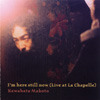 When talking about the music of Kawabata Makoto or his band AcidMothers Temple, it's difficult to avoid the issue of quality control.Because there will always be someone anxious to publish every sonicutterence that Makoto commits to tape, and because Makoto appears toindulge anyone who asks him for an album, the ratio of albums to fullythought-out ideas is weighted heavily towards the former. "I'm HereStill Now" is another unnecessary addition to his inexplicably growingcatalog. It is a mediocre, nearly bootleg-quality quality audiencerecording of an improvised solo guitar and sarangi concert he gave inToulouse in 2002. As an improviser, Makoto can be great in a rockcontext; when he plays in Acid Mothers Temple or with improv/rock bandsMusica Transonic or Mainliner, he can wail like hell. But on thisrecording he seems confused, even bored. He begins with the tentativedrone of feedback through a delay effect. If you've ever been around aguitarist who plays with a rack delay for the first time, you've heardthese sounds before. After ten minutes of noodling without arrivinganywhere, he switches to a bowed sarangi through tons of reverb. I getthe feeling that reverb here is used as a cheap way to imply gravity,to cover up the uncompelling music with an emotionally-chargedtechnological shorthand. He attempts a few directions here, but doesnot commit to any of them. Unsurprisingly, he finishes by turning hisdigital delay effects back on and doing the first trick again, only fora longer amount of time. It succeeds in becoming a drone only bydefinition, though I get the feeling that Makoto was trying for sometranscendental bliss such that Phil Niblock and Keiji Haino achieve.What could it mean that, when listening to "I'm Here Still Now", I hearthe musician's effects more than I hear the music he's making? And whydid some editor not remove the audible digital clip at the 20-minutemark, the sound of audience members coughing and shifting in thierseats, or of glasses clinking? Perhaps there is such a rush to releasemore Makoto product that the merit of each individual album is notfully considered. -
When talking about the music of Kawabata Makoto or his band AcidMothers Temple, it's difficult to avoid the issue of quality control.Because there will always be someone anxious to publish every sonicutterence that Makoto commits to tape, and because Makoto appears toindulge anyone who asks him for an album, the ratio of albums to fullythought-out ideas is weighted heavily towards the former. "I'm HereStill Now" is another unnecessary addition to his inexplicably growingcatalog. It is a mediocre, nearly bootleg-quality quality audiencerecording of an improvised solo guitar and sarangi concert he gave inToulouse in 2002. As an improviser, Makoto can be great in a rockcontext; when he plays in Acid Mothers Temple or with improv/rock bandsMusica Transonic or Mainliner, he can wail like hell. But on thisrecording he seems confused, even bored. He begins with the tentativedrone of feedback through a delay effect. If you've ever been around aguitarist who plays with a rack delay for the first time, you've heardthese sounds before. After ten minutes of noodling without arrivinganywhere, he switches to a bowed sarangi through tons of reverb. I getthe feeling that reverb here is used as a cheap way to imply gravity,to cover up the uncompelling music with an emotionally-chargedtechnological shorthand. He attempts a few directions here, but doesnot commit to any of them. Unsurprisingly, he finishes by turning hisdigital delay effects back on and doing the first trick again, only fora longer amount of time. It succeeds in becoming a drone only bydefinition, though I get the feeling that Makoto was trying for sometranscendental bliss such that Phil Niblock and Keiji Haino achieve.What could it mean that, when listening to "I'm Here Still Now", I hearthe musician's effects more than I hear the music he's making? And whydid some editor not remove the audible digital clip at the 20-minutemark, the sound of audience members coughing and shifting in thierseats, or of glasses clinking? Perhaps there is such a rush to releasemore Makoto product that the merit of each individual album is notfully considered. - 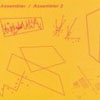 Released just a few months after the rigid 10th, Nobukazu Takemura's newest is an adventure in minimalism that is as restorative as a long vacation taken after going too long without a break. Too often have I heard sound collages that seem to go nowhere; they simply run about in circles covering the same old ground for the duration of fifteen or twenty minutes or more. Thankfully, Assembler/Assembler 2 is about as predictable as a piano falling out of a building.
Released just a few months after the rigid 10th, Nobukazu Takemura's newest is an adventure in minimalism that is as restorative as a long vacation taken after going too long without a break. Too often have I heard sound collages that seem to go nowhere; they simply run about in circles covering the same old ground for the duration of fifteen or twenty minutes or more. Thankfully, Assembler/Assembler 2 is about as predictable as a piano falling out of a building.
 Success in the music business, as honorable as it is fleeting, grants acertain immunity which allows artists a level of creative freedom. Suchliberties would be considered risky if indulged in by an unknown, butthe same measures taken by an established act with a good sales trackand a verbose publicist will often be viewed favorably. Groups likeRadiohead and Autechre fit that profile. However, the man behindUniform does not. His 2001 album for Mute Irony Isunder the 2nd Gen moniker achieved, at least, a dignified level ofmedia praise, being well-reviewed by both respectable and disgustingpublications alike. Its noisy, filthy style of hip hop found champions(and collaborators) in peers like Dälek and Techno Animal.Unfortunately, I doubt that either of those acts would have much lovefor his debut release as Uniform. Released on the growingpost-industrial record label Ad Noiseam, Not A Word lacks thesubstance of the 2nd Gen project. Nearly devoid of actual content, thealbum sounds much more like a collection of segues and interludes thana full-length album. This sixteen track disc could have beencomfortably reduced to a less pretentious, more concise EP, if eventhat. I'd offer more information and opinion about this release, but,in fairness, it doesn't deserve it. With any luck, Flicknives, the upcoming 2nd Gen follow-up album to be released on Quatermass, will prove to be a far more worthwhile listen.
Success in the music business, as honorable as it is fleeting, grants acertain immunity which allows artists a level of creative freedom. Suchliberties would be considered risky if indulged in by an unknown, butthe same measures taken by an established act with a good sales trackand a verbose publicist will often be viewed favorably. Groups likeRadiohead and Autechre fit that profile. However, the man behindUniform does not. His 2001 album for Mute Irony Isunder the 2nd Gen moniker achieved, at least, a dignified level ofmedia praise, being well-reviewed by both respectable and disgustingpublications alike. Its noisy, filthy style of hip hop found champions(and collaborators) in peers like Dälek and Techno Animal.Unfortunately, I doubt that either of those acts would have much lovefor his debut release as Uniform. Released on the growingpost-industrial record label Ad Noiseam, Not A Word lacks thesubstance of the 2nd Gen project. Nearly devoid of actual content, thealbum sounds much more like a collection of segues and interludes thana full-length album. This sixteen track disc could have beencomfortably reduced to a less pretentious, more concise EP, if eventhat. I'd offer more information and opinion about this release, but,in fairness, it doesn't deserve it. With any luck, Flicknives, the upcoming 2nd Gen follow-up album to be released on Quatermass, will prove to be a far more worthwhile listen. 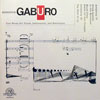 This collection is a curious combination of old and new. Gaburo, born1926 was trained as a composer in the old school and is clearlyinfluenced by pre-WW2 aesthetics and techniques but the music herecombines this with free-wheeling new-world invention in the age ofCage. The oldest of these five pieces from 1956 is a string quartetthat, while clearly comptetent, has more tutonic romanticism (in adecidedly Schoenberg style) than I prefer. Antiphony III and IV,dating from 62 and 67 respectively, both combine live musicians withelectronic music on tape, both set miniature poems by Virginia Hommel,and both aim to create a continuum between the sounds of the singersand instruments and the electronic sounds. The continuum was achievedby composing the pieces as a whole and orchestrating them withmusicians, recordings of the musicians, processed sounds from thoserecordings and synthetic sounds similar to all these. The result isconvincing and at times approaches the lyricism of Nono and Berio'selectro-acoustic music. But underlying it all is still clearlySchoenberg—Antiphony IV for tape and 16 voices being destinctlyreminicent of the choral work of the father of serialism. But there isalso a hint of Ligeti's Aventures and Nouvelles Aventures inthe more outlandish vocal techniques used. In these two pieces I findthat the combination of the old, in the formal and ensemble aspects,with the new, in the electronic and sound manipulation, actually worksvery well. They seem anchored in a familliar tradition while providingcompelling innovative personal expression. Mouth-Piece: Sextet for Solo Trumpet(1970) on the other hand is hideous. It is an excercise in extendedtechnique that would have been better left either to an improviser orto a composer who genuinely loves the trumpet. And that leaves The Flow of (u)a radically minimalistic piece for three voices all singing the samenote continuously using the "u" phoneme (i.e. "oo") for 23 minutes. Itis quintessential drone music that bears comparison to that of PhilNiblock. But while most drone music normally uses occasional changes tothe component tones this piece uses just the minutest continualvariation of pitch and tone color. The fact that this is sung by humanvoices is crucial to the success of the piece since the changing beatsand colors arise form the singers continually working to match pitchwith each other and to perfect their "u" sound. Extreme in itssimplicity it works in they way all good drone music works: bycaptivating attention and drawing one into facination with the minutedetail of the sound.
This collection is a curious combination of old and new. Gaburo, born1926 was trained as a composer in the old school and is clearlyinfluenced by pre-WW2 aesthetics and techniques but the music herecombines this with free-wheeling new-world invention in the age ofCage. The oldest of these five pieces from 1956 is a string quartetthat, while clearly comptetent, has more tutonic romanticism (in adecidedly Schoenberg style) than I prefer. Antiphony III and IV,dating from 62 and 67 respectively, both combine live musicians withelectronic music on tape, both set miniature poems by Virginia Hommel,and both aim to create a continuum between the sounds of the singersand instruments and the electronic sounds. The continuum was achievedby composing the pieces as a whole and orchestrating them withmusicians, recordings of the musicians, processed sounds from thoserecordings and synthetic sounds similar to all these. The result isconvincing and at times approaches the lyricism of Nono and Berio'selectro-acoustic music. But underlying it all is still clearlySchoenberg—Antiphony IV for tape and 16 voices being destinctlyreminicent of the choral work of the father of serialism. But there isalso a hint of Ligeti's Aventures and Nouvelles Aventures inthe more outlandish vocal techniques used. In these two pieces I findthat the combination of the old, in the formal and ensemble aspects,with the new, in the electronic and sound manipulation, actually worksvery well. They seem anchored in a familliar tradition while providingcompelling innovative personal expression. Mouth-Piece: Sextet for Solo Trumpet(1970) on the other hand is hideous. It is an excercise in extendedtechnique that would have been better left either to an improviser orto a composer who genuinely loves the trumpet. And that leaves The Flow of (u)a radically minimalistic piece for three voices all singing the samenote continuously using the "u" phoneme (i.e. "oo") for 23 minutes. Itis quintessential drone music that bears comparison to that of PhilNiblock. But while most drone music normally uses occasional changes tothe component tones this piece uses just the minutest continualvariation of pitch and tone color. The fact that this is sung by humanvoices is crucial to the success of the piece since the changing beatsand colors arise form the singers continually working to match pitchwith each other and to perfect their "u" sound. Extreme in itssimplicity it works in they way all good drone music works: bycaptivating attention and drawing one into facination with the minutedetail of the sound. 


